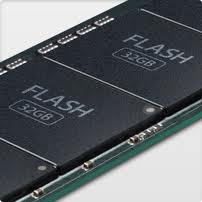Published on the 07/08/2014 | Written by Beverley Head

Flash storage – currently 15 times more expensive than spinning disk – won’t reach pricing parity for at least a decade, forcing enterprises to continue to run hybrid storage platforms for the foreseeable future…
The rise of big data and virtualisation, coupled with consumer and corporate data gluttony are leading to a doubling of enterprise data stores each year. While the majority of data can be held on disk – data which needs to be swiftly retrieved and used is increasingly being shifted onto flash solid state drives – but at a cost.
A survey released in May by Research and Markets forecast that demand for flash drives would soar by 60 percent a year until 2016 when the global market would be worth $US1.6 billion.
One reason that the market is worth so much is that flash remains very expensive compared to disk storage.
According to Varun Mehta, co-founder and vice president of engineering at Nimble Storage, when the company was established seven years ago flash was 30 times more expensive than disk. That has now dropped to 15 times as expensive he said.
But for most enterprises today flash is like Aunt Maud’s best china – it’s only brought out for special occasions. The situation seems set to persist for another decade.
Mehta, who is currently in Australia, forecast that “disk will be most cost effective for the next decade” but that sometime during the following decade the two technologies would achieve price parity.
Nimble, sells hybrid flash-disk storage systems and adaptive storage systems which allow the amount of flash to be wound up to meet changing demands. Mehta said one of the most common applications of flash was in highly virtualised environments, especially enterprises with virtual desktops which needed high I/O speeds.
Founded in 2007 Nimble remains a relative minnow in the storage market with sales last year of $US125 million compared to giants such as EMC, HDS, NetApp and IBM. (It established Australian operations less than two years ago, but does not break out revenues by region.)
However, later this year, Mehta said that the company planned to introduce fibre channel protocols to its product set which will open up a huge swathe of the enterprise market that it has previously not been able to tackle.



























